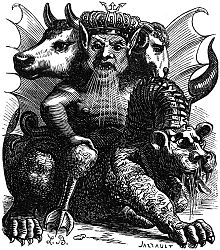 Dream Techniques in Jewish Mysticism
Dream Techniques in Jewish Mysticism
From Jewish Mystical Realms
In many cultures, dreams have been conceived of as channels of communication with other, spiritual realms, and this is the case also of Jewish mysticism. On the one hand, divine emissaries were described as invading the human consciousness during dreams in order to announce important messages; on the other, someone could induce dreams by resorting to a variety of oneirogenic* techniques. We will bring here several examples of such techniques, out of an enormous body of literature, which demonstrate that Kabbalists were involved in various nocturnal forms of experiences, an aspect of Kabbalah which still awaits analysis by scholars.
One particularly neglected realm in the study of Kabbalah is a literary genre dealing with dream-recipes: the so-called she’elot halom, i.e. questions formulated before someone went to sleep, questions whose answers were expected to arrive in dreams. In many cases, these answers took the form of a biblical Continue reading
 The Three Crosses of Golgotha
The Three Crosses of Golgotha


 [Deut. xxxii. 17; Ps. cvi. 37] and
[Deut. xxxii. 17; Ps. cvi. 37] and  [Lev. xvii. 7; II Chron. xi. 15; A. V. “devils”; Luther, “Feldgeister” and “Feldteufel”]; Aramaic, or rabbinical,
[Lev. xvii. 7; II Chron. xi. 15; A. V. “devils”; Luther, “Feldgeister” and “Feldteufel”]; Aramaic, or rabbinical,  and
and 
 as spirits animating all elements of life and inhabiting all parts of the world, have their place in the primitive belief of all tribes and races. When certain deities rose to be the objects of regular worship and became the rulers of the powers of life, demons, or spirits, were subordinated to them. But inasmuch as they were still feared and occasionally worshiped by the populace, they became the objects of popular superstition.
as spirits animating all elements of life and inhabiting all parts of the world, have their place in the primitive belief of all tribes and races. When certain deities rose to be the objects of regular worship and became the rulers of the powers of life, demons, or spirits, were subordinated to them. But inasmuch as they were still feared and occasionally worshiped by the populace, they became the objects of popular superstition. 

 Dore – The Destruction of Leviathan very much like the sword of Saint George destroying the selfish competitive Dragon-Serpent Ego
Dore – The Destruction of Leviathan very much like the sword of Saint George destroying the selfish competitive Dragon-Serpent Ego










Recent Comments